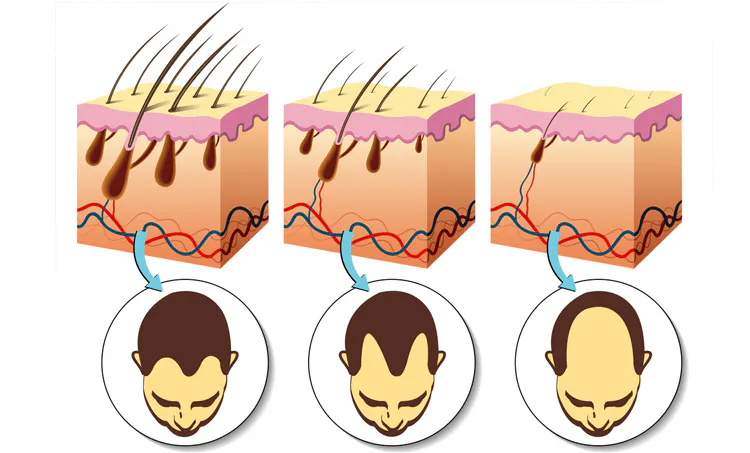- Your cart is empty
- Continue Shopping
Does PRP treatment block DHT?

Platelet-Rich Plasma (PRP) therapy has gained popularity in recent years as a potential solution for various medical and cosmetic concerns. From promoting hair growth to aiding tissue repair, its applications are vast. Among the many questions surrounding PRP treatment, one that frequently arises is its effect on DHT (dihydrotestosterone), a hormone linked to hair loss in both men and women. PRP treatment. In this comprehensive blog post, we delve into the relationship between PRP treatment and DHT to uncover the truth behind this widely debated topic. andractim dht gel for sale. https://sfcc-chemicals.com/
Understanding DHT and Hair Loss:
Before delving into the intricacies of PRP treatment and its potential impact on DHT, it’s essential to grasp the role DHT plays in hair loss. Dihydrotestosterone, a derivative of testosterone, is a potent androgen hormone that plays a crucial role in the development of male characteristics. While it contributes to various physiological functions, including libido and muscle growth, excessive levels of DHT are associated with hair loss, particularly in individuals genetically predisposed to androgenetic alopecia, commonly known as male or female pattern baldness. andractim gel. https://sfcc-chemicals.com/
The Truth About PRP Treatment: Does it Block DHT?
The Mechanism of PRP Therapy:
Platelet-Rich Plasma therapy involves the extraction and concentration of platelets from a patient’s blood, which are then reintroduced into the body at the site of treatment. Platelets contain numerous growth factors and cytokines that stimulate tissue regeneration, angiogenesis (the formation of new blood vessels), and wound healing. In the context of hair restoration, PRP is believed to promote hair growth by rejuvenating dormant hair follicles, prolonging the anagen (growth) phase of the hair cycle, and reducing inflammation in the scalp. andractim cream for sale. https://sfcc-chemicals.com/
The Relationship Between PRP and DHT:
While PRP therapy has shown promising results in promoting hair growth and improving hair density, its effect on DHT levels is less clear-cut. Unlike medications such as finasteride and dutasteride, which work by inhibiting the enzyme responsible for converting testosterone into DHT, PRP does not directly interfere with DHT production. Instead, its mechanism of action primarily revolves around stimulating cellular repair and regeneration within the scalp.

Indirect Effects on DHT:
Although PRP treatment does not directly block DHT, some researchers speculate that it may exert indirect effects on DHT levels through its influence on scalp health and hair follicle function. By enhancing blood circulation and delivering growth factors to the scalp, PRP therapy may create a more favorable environment for hair follicles to thrive, potentially mitigating the effects of DHT-induced miniaturization. Additionally, PRP’s anti-inflammatory properties may help alleviate scalp inflammation, which is believed to exacerbate hair loss in individuals with androgenetic alopecia.
Clinical Evidence and Research Findings:
Despite the theoretical rationale supporting the notion that PRP therapy could indirectly modulate DHT activity, empirical evidence directly linking PRP treatment to changes in DHT levels is scarce. Most studies evaluating the efficacy of PRP for hair restoration focus on clinical outcomes such as hair count, hair thickness, and patient satisfaction, rather than assessing hormonal changes. Consequently, the exact mechanisms underlying PRP’s effects on DHT remain speculative, warranting further investigation through well-designed clinical trials and laboratory studies. andractim gel for sale https://sfcc-chemicals.com/
Considerations and Limitations:
While PRP therapy holds promise as a non-invasive option for hair restoration, it’s essential to approach its potential benefits with realistic expectations. As with any medical procedure, individual responses to PRP treatment can vary, and results may not be uniform across all patients. Moreover, the longevity of outcomes and the need for maintenance sessions are factors to consider when contemplating PRP therapy for hair loss management.
Conclusion:
In conclusion, the relationship between PRP treatment and DHT is complex and multifaceted. While PRP therapy does not directly block DHT production, its ability to promote scalp health, stimulate hair follicle activity, and reduce inflammation may indirectly influence DHT levels and mitigate its detrimental effects on hair growth. However, further research is needed to elucidate the precise mechanisms underlying PRP’s effects on DHT and its implications for hair restoration. In the meantime, individuals considering PRP therapy for hair loss should consult with qualified healthcare professionals to determine the most suitable treatment approach based on their unique needs and circumstances.


